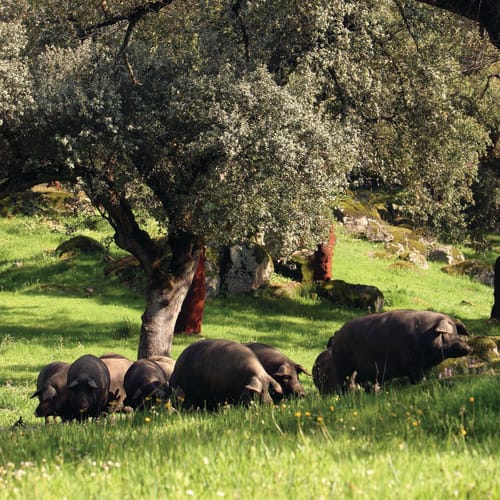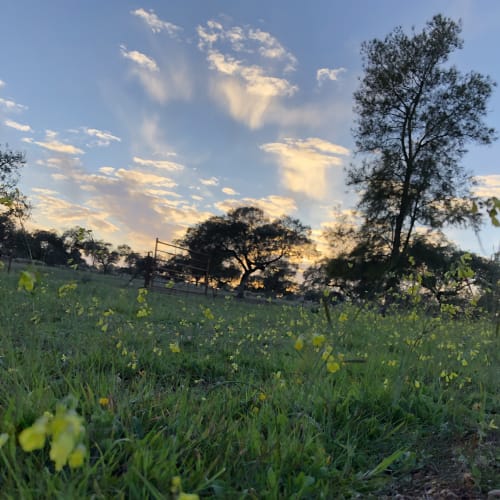Three Kings Sale - Up to 40% Off! Shop Sale
The Wild West of Spain
October 2005




My wife Ruth and I began our serious exploration of Spain thirty-five years ago when Spain was just beginning to stir from a long social and economic slumber. The years of poverty brought on by the Civil War and its aftermath were still a fresh memory. Many of the mothers of Spain were dressed in black. In much of Spain the 'moto' (motor bike) was the only mode of transportation, if one chose not to walk.
I remember driving along a country road in Aragon and seeing a farmer making furrows in the rich soil with his horse-drawn plow while his wife followed just behind stooping over to plant seedlings. When I was stationed in Rota I remember driving around the outskirts of the naval base and seeing a father preparing his field for a crop of sunflowers with his ten year old son by his side. The little boy was learning what soon would be his responsibility as a man. He did not have the modern-day luxury of wondering what kind of career path he would follow.

In those days, Ruth and I would rent a small SEAT 850 - the most basic of cars - and set off into the countryside. We particularly liked heading west beyond Salamanca toward the western border with Portugal where traces of modernity are less apparent. In the midst of this mountainous part of Salamanca, among the craggy landscape of rocks and meadows, is the dehesa, a grassy pastureland dotted with cork and holm oaks.
The dehesa is the favorite grazing area of the free-range black hoofed cerdo ibérico, the rare Iberian pig. During the autumn each one of them gobbles up bellotas (acorns) fallen from the trees at the astonishing rate of over twenty pounds of acorns a day! Like the famous fighting bulls, the lineage of these animals traces back to prehistory. Their presence is central to the Spanish culture.
I think it is fascinating that Spaniards use the term 'sacrifice' when referring to the slaughter of their animals. For me the word 'sacrifice' connotes a closer relationship between man and animal than we normally think of in America. It means that the death of the animal has a sacred dimension in the human's daily living. The Spaniards ritualize and sanctify the loss of life as no other people that I know of - whether it be the profound processions of Semana Santa, the ritual in the bull ring or the traditional late autumn matanza, where all of the town gathers to slaughter (sacrifice) their animals in preparation for the lean winter months ahead.
Hams are omnipresent throughout the land. Black bulls may appear more heroic, but the ham from the pigs is more immediate. You will see plates of sliced jamón everywhere. During the Christmas season whole hams hang by the hundreds from the rafters of the stores. During the year you will find that not a café exists without a ham proudly displayed on a stand (with several more to back it up).
What underscored the importance of the Iberian pig to Spain for me was when I read that Columbus included Iberian pigs among his 'passengers' when he sat sail on his second voyage of discovery. He intended for them to multiply in the New World and thereby nourish the valiant Spanish settlers for years to come.

As curious as it may seem to some of you, pigs and hams reflect an idealized set of values of Spain, much as cowboys rounding up longhorn steer are idealized images of America's past. The free-range Iberian pigs capture a romantic view that the Spanish people treasure: the simple valor of the frontier, a nation with a calling, and a sweeping land that sustained people on their mission of reconquest. When Spaniards savor wafer thin slices of their jamón it evokes images of the forests and the shifting frontier - much as we in America romanticize a big sizzling steak that we prepare with pride on our outdoor grills.
I find that the parallels with the American romance of the Wild West are fascinating. The Spaniards repopulated the land by granting land for families to herd sheep and tend their Iberian boars, much as we Americans populated the expanding Western frontier by establishing homesteads for sheepherders and cattle ranchers.
The more I travel the byways of Spain and meet her generous people, the clearer it becomes to me the affinity we have for one another as Americans and Spaniards. The incidents of history make us appear to be very different, especially since America is such a young country. But we share the core values of valor, an independent spirit and the interdependence of the family.
Tu amigo,
Don

